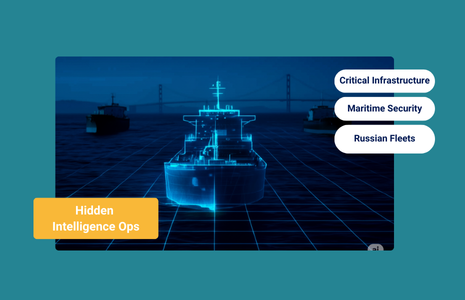The Flag Now Being Used to Move Drugs Across the Atlantic

What’s inside?
From Ireland’s huge cocaine bust to the fentanyl flood in the U.S., Windward attempts to keep the industry updated about the latest cat-and-mouse maneuvers involving drug smuggling. The Financial Times recently published an important news analysis:
“The Maritime Analysis and Operations Centre — Narcotics (MAOC-N), a joint US, UK and European operations centre for narcotics traffic based in Lisbon and focusing mainly on smaller vessels, has registered an increase in Polish-flagged pleasure craft suspected of carrying drugs since 2021.
While MAOC-N was monitoring 12 Polish-flagged vessels potentially linked to trafficking in 2021, that number rose to 31 in 2022 and 47 last year. Boats appear on the organisation’s radar because of intelligence tip-offs, ongoing investigations and suspicious vessel or crew movements.”
The Financial Times further notes that drug traffickers are taking advantage of a legal loophole that prevents law enforcement members from boarding Polish-flagged vessels at sea. The article states that the number of new boat registrations has rocketed from about 2,000 in Poland’s system in 2020, to almost 77,000 currently.
Mitigating Drug Smuggling
Artificial intelligence should serve as the backbone for advancing beyond basic maritime domain awareness to uncover deceptive shipping practices and harness predictive analytics to detect smuggling. The right platform will provide you with information regarding vessels’ flags, ownership, and association with sanctioned entities, including early detection capabilities that send alerts regarding unusual or risky sailing paths.
Traditional tracking maps may provide inaccurate or delayed information because some ships, which appear to be compliant and aren’t yet flagged on sanctions lists, might not be what they seem. Certain vessels are employing techniques like manipulating GNSS data or conducting multiple ship-to-ship (STS) transfers to disguise the true origin, destination, or nature of their cargo, helping them evade detection while engaged in illicit activities.
4 Critical Components to Combat the Crisis
Generally speaking, preventing drug smuggling requires leveraging advanced data analytics to recognize and predict drug trafficking patterns, identify high-risk shipments, and direct enforcement efforts more efficiently. Here are four essential components:
- Gathering diverse data sources: agencies collect data from a variety of sources, including shipping records, travel patterns, financial transactions, communication intercepts, and prior enforcement actions. This data helps reveal patterns, trends, and networks linked to drug trafficking.
- Predictive modeling and risk assessment: through machine learning and statistical modeling, analysts can predict which shipments, routes, or individuals are likely involved in smuggling. Risk assessment tools evaluate the likelihood of illegal activities by examining factors like origin, destination, shipping methods, and known affiliations.
- Network analysis: authorities can map out drug trafficking networks by studying the relationships and connections between individuals and organizations. This enables them to pinpoint key figures, understand the network’s structure, and target efforts to dismantle it.
- Real-time analytics and decision support: advanced data analytics tools provide frontline officers and decision-makers with real-time insights. For instance, alerts about high-risk shipments arriving at ports can help focus inspection efforts more effectively.

The Significance of a Strong AI Model
Knowing where and what to look for is no easy task.
Windward’s Smuggling Risk Model is designed to identify vessels at the highest risk of smuggling by assessing each vessel daily and flagging those posing the greatest threat. The model continuously improves through machine learning, incorporating updates from recent drug busts.
Additionally, Maritime AI™ enables users to learn and adapt. If one bad actor is caught using a new tactic, such as this Polish flag loophole, it’s likely others are doing the same (as the numbers show in this case). By reverse-engineering the smuggler’s routes and strategies, and analyzing the origin and destination ports, law enforcement can leverage Windward’s Sequence Search feature to detect other vessels involved in similar illegal activities.
As deceptive shipping methods evolve and new trends emerge, staying up-to-date with these ever-changing tactics is vital.
Collaboration is Key
Windward’s data is unclassified, allowing law enforcement agencies to easily share vessel profiles and investigations with other teams or organizations. This facilitates collaboration on fast-moving, complex missions by sharing insights through vessel reports, shareable links, and in-platform comments.
Windward’s proven track record includes partnerships with leading defense and law enforcement agencies worldwide, including coast guards.












